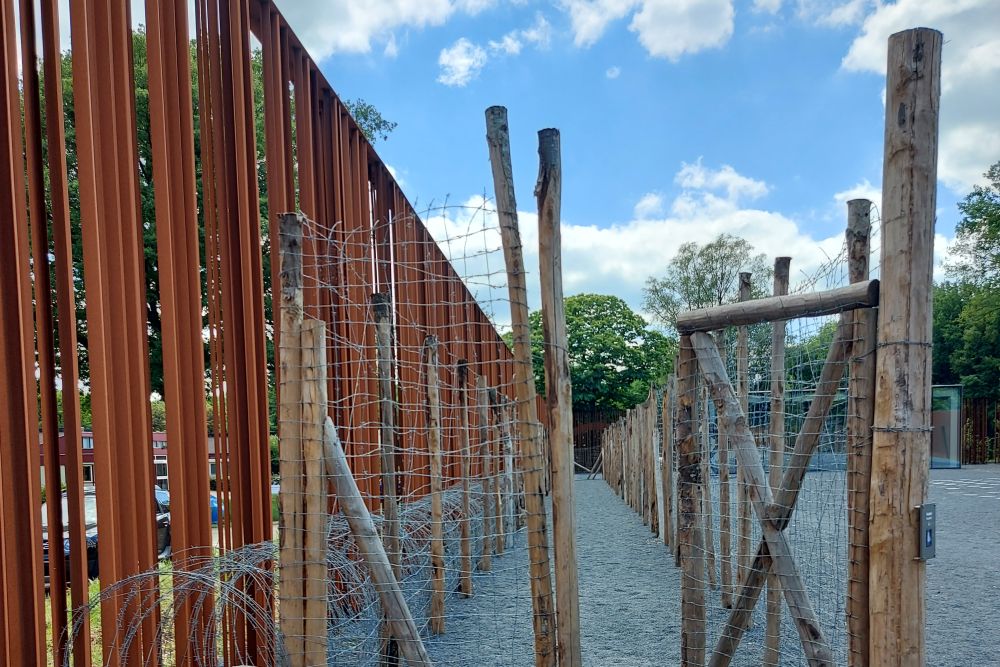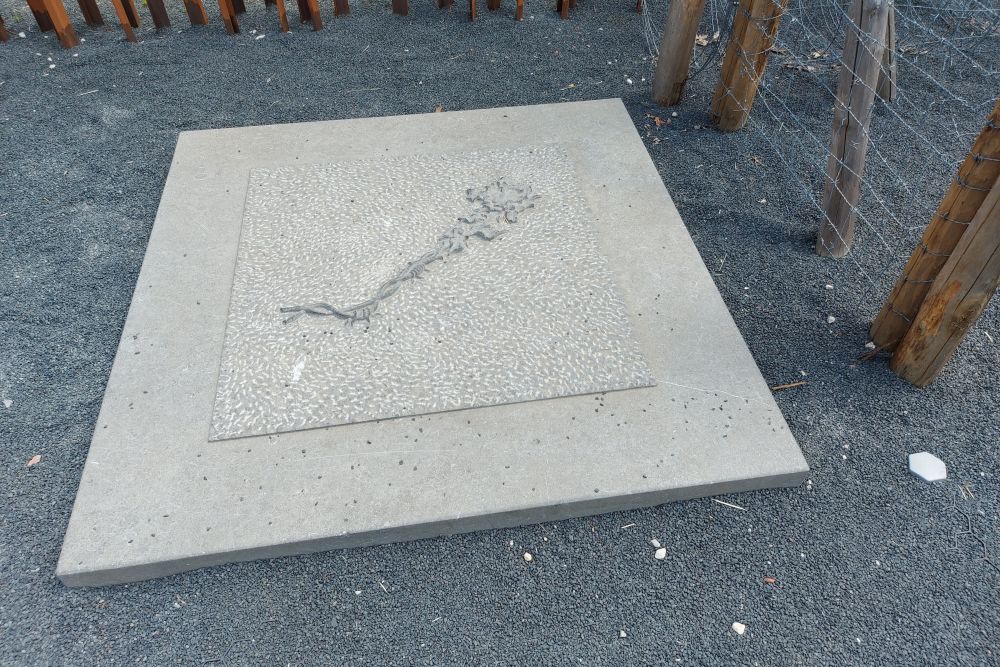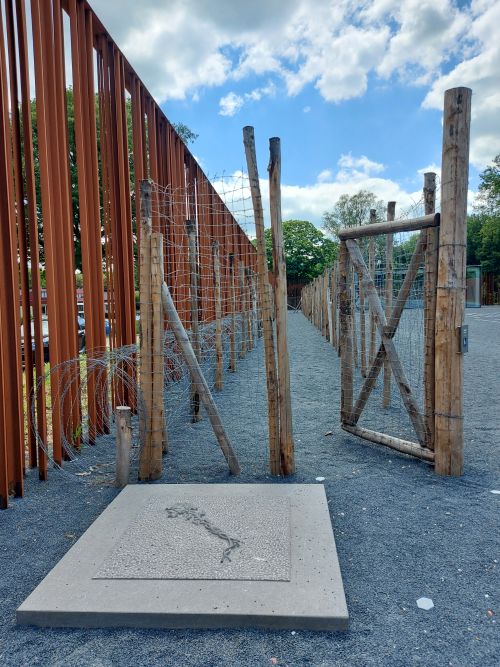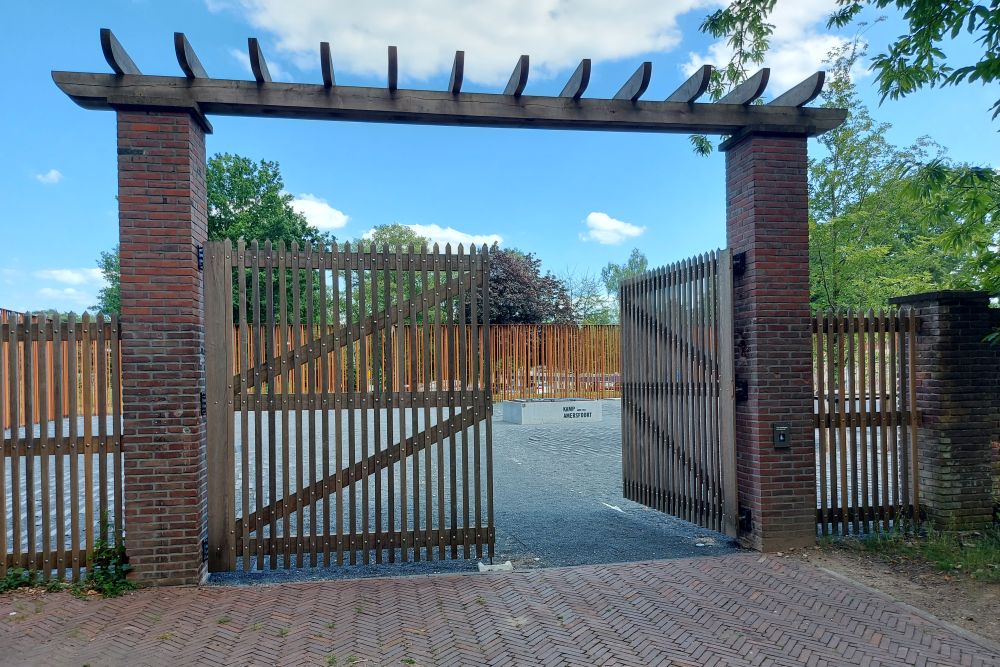Rosary Camp Amersfoort
During World War II, prisoners in Camp Amersfoort were put in the courtyard by the camp guards. Here was a narrow piece of ground with barbed wire on all sides that became notorious as a punishment area. The prisoners had to stand there in all weathers, for hours, sometimes even days. The name Rose Garden was a mockery: the prisoners imagined the points of the barbed wire to be roses, a sign of hope.
This Rose Garden has been recreated on the grounds of the Camp Amersfoort National Monument. There is also a hardstone tombstone with a broken rose and barbed wire carved into it. This image is based on a drawing by former prisoner Jacques Kopinsky. The rose functions as the logo of the National Monument Camp Amersfoort Foundation.
As an 18-year-old Jewish boy, Kopinsky ended up in Camp Amersfoort during the Second World War. He survived the war but was, like many other prisoners, psychologically damaged by his stay in Camp Amersfoort. After the liberation he drew the rose and also recorded his experiences in Camp Amersfoort in other works of art.
Translated with www.DeepL.com/Translator (free version)
Do you have more information about this location? Inform us!
Source
- Text: TracesOfWar
- Photos: Kevin Prenger
Nearby
Museum
- National Monument Camp Amersfoort - Leusden
- Dutch Cavalry Museum - Amersfoort
- Historical Collection Signal Corps - Amersfoort
Point of interest
- Camp Amersfoort - The Morgue - Leusden
- Temporary Cemetery Camp Amersfoort - Leusden
- Lower Cadre School WA - Leusden
Monument
- Memorial Stone Camp Amersfoort - Leusden
- Monument For Shelter Providers - Leusden
- Memorial Execution Henk Sneevliet et al Camp Amersfoort - Leusden
Cemetery
- Soviet War Cemetery Leusden - Leusden
- Dutch War Graves Rusthof - Leusden
- Commonwealth War Graves Oud-Leusden (Rusthof) - Leusden
Remembrance Stone
- Memorial Stones Soembastraat 8 - Amersfoort
- Memorial Stones Madoerastraat 11 - Amersfoort
- Memorial Stones Madoerastraat 21 - Amersfoort
Fortification
- Reconstructed Trenches Camp Amersfoort - Leusden
- Flak Position Camp Amersfoort - Leusden
- German Command Bunker 608 Amersfoort - Amersfoort








